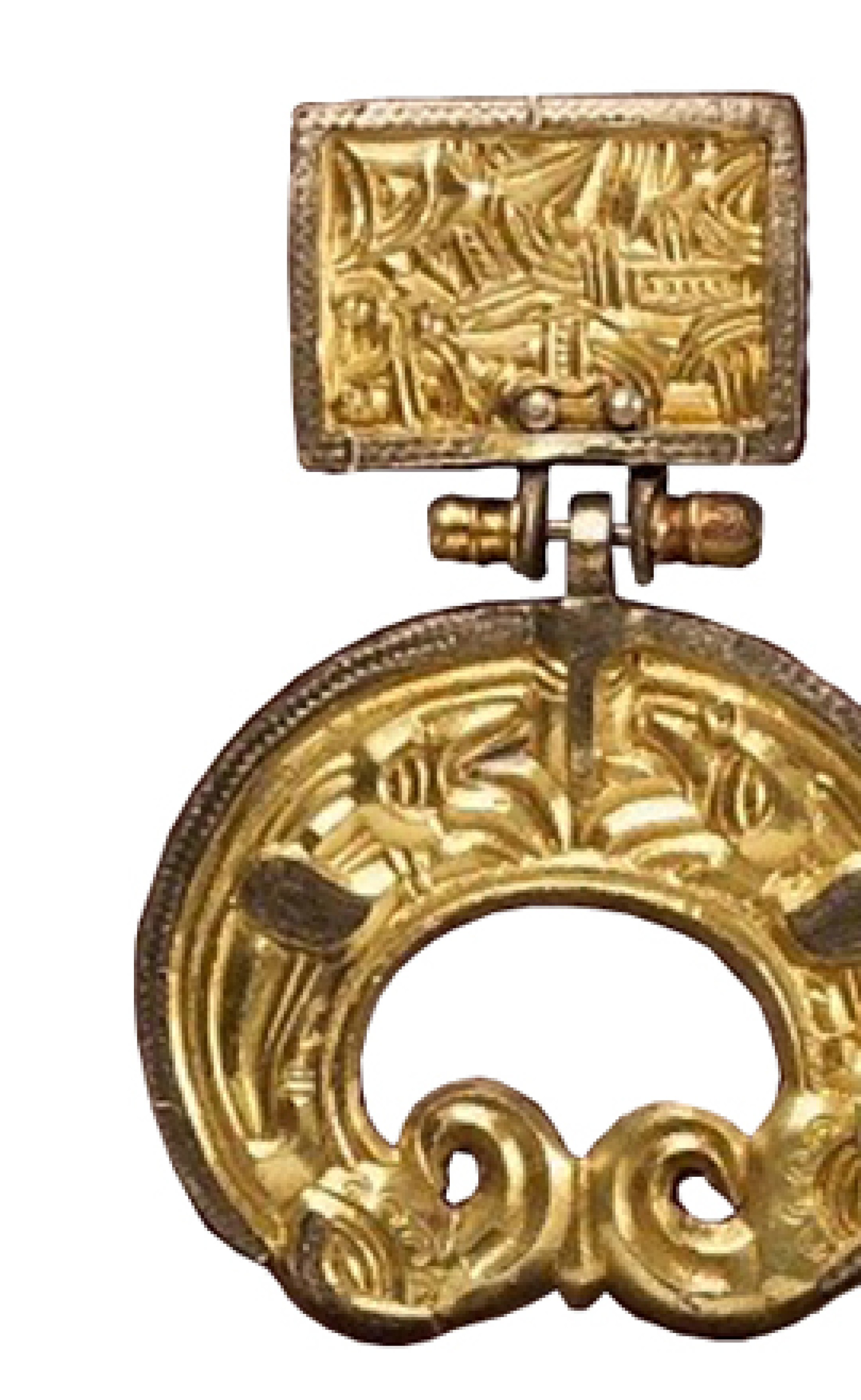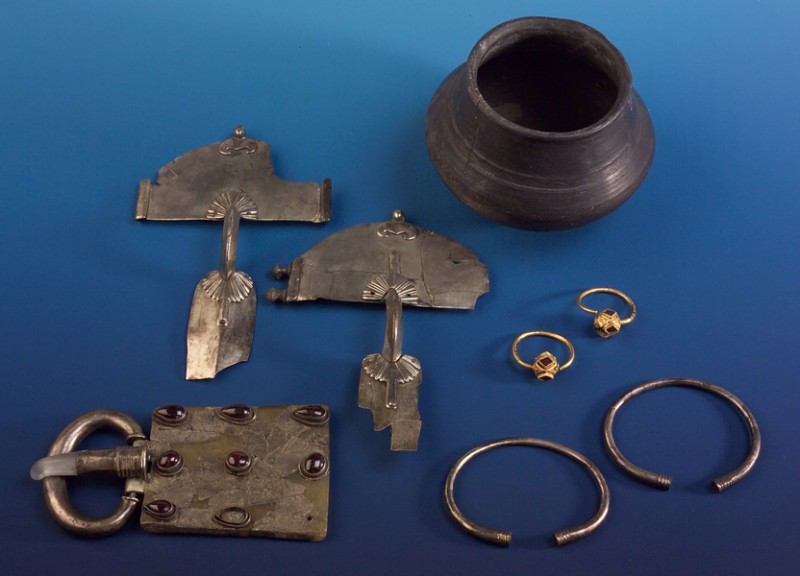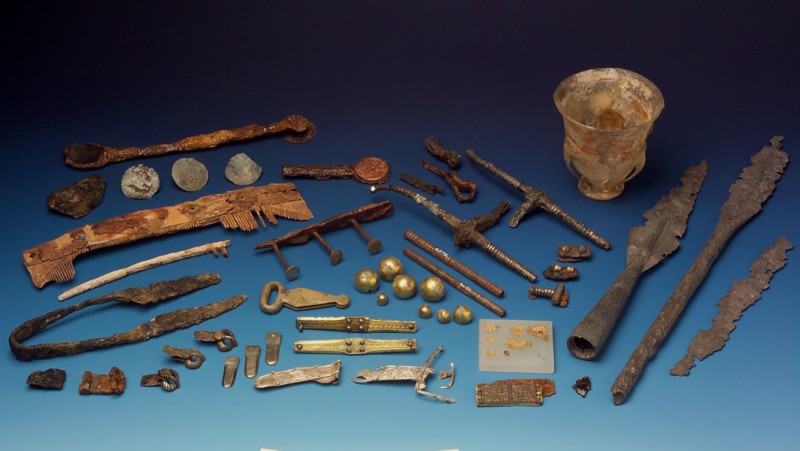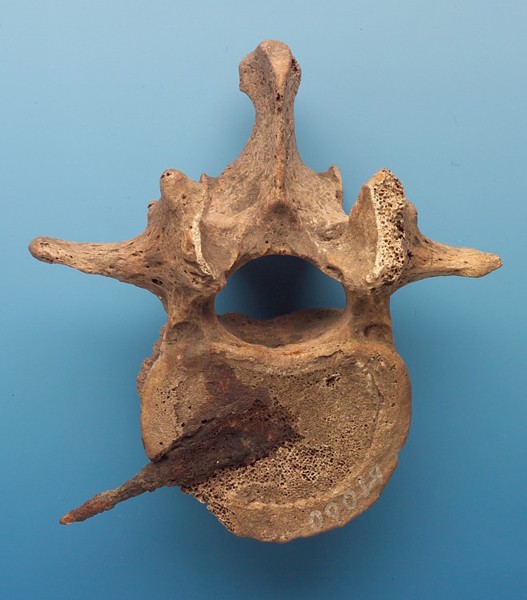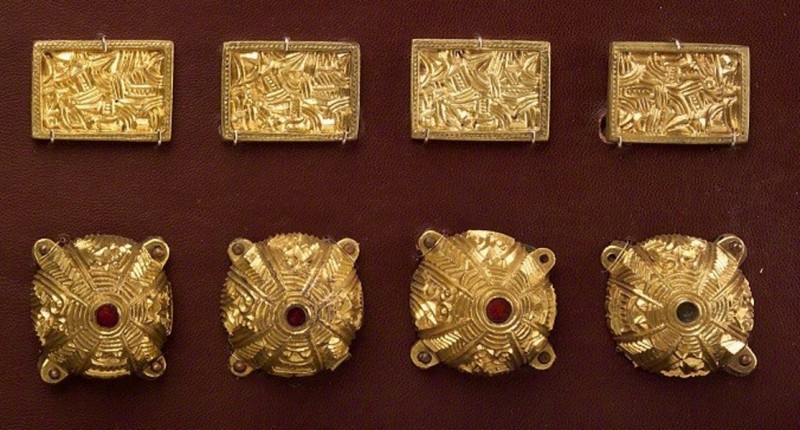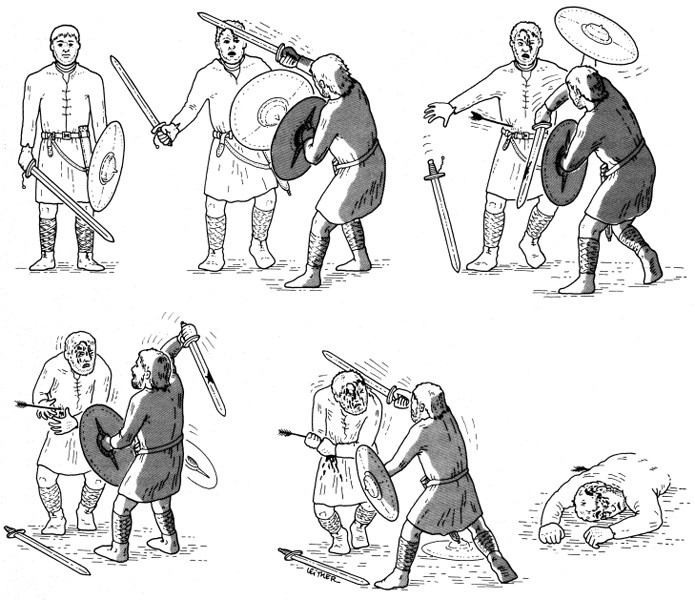Contact: Dr. Stefan Eichert
Several items come from the grave of a female Goth discovered by chance in Laa an der Taya in the year 1908. Thanks to her
clothing the grave can be dated to the first half of the 5th century. Among the finest objects are a necklace made of amber,
rock crystal, glass, milk quartz, carnelian and quartz. These materials indicate that the deceased woman came from the region
around the Black Sea.
Another item dating from the 5th century is a 99-centimetre-long iron sword (spatha) with a quillon and a flat grip hinge
as well as silver fittings from a wooden handle which has been lost. The sword was found in Leopoldau, Vienna.
A grave from the same site, whose contents also form part of the Early History collection of the Natural History Museum, demonstrates
the brutal nature of the conflict between the Huns and the Avars. Discovered in 1932, it contains the remains of a man whose
skull was severely injured by two blows. A three-bladed iron arrowhead was also found embedded in one of the vertebrae in
his lower back. Analysis of these injuries gives a detailed insight into the last seconds of the man's life.
Many items were added to the collection through the excavation of the largest Langobard cemetery ever discovered, in the village
of Maria-Ponsee in Lower Austria. Carried out by the Austrian Federal Monuments Office, the excavation revealed around 100
graves containing remains of weapons, glass beakers, metal fittings decorated with figures, gold-plated bow-shaped fibulae
and many more objects.
A highlight of the collection is the grave of a Langobard princess discovered in Hauskirchen. The grave (find number 13) is
considered the most important grave of the Langobard period ever found in Austria. Inside the grave of the deceased woman
were two horses, which had probably once pulled a cart. Unfortunately the grave was probably robbed only a few years after
the burial. However, the robbers were not very thorough in their search – they missed, among other things, a large number
of horse shoes.
The finds in the Early History collection also include objects from the period up to the end of the 10th century, when Austria
was first mentioned in documents under the name "Ostarrichi".

